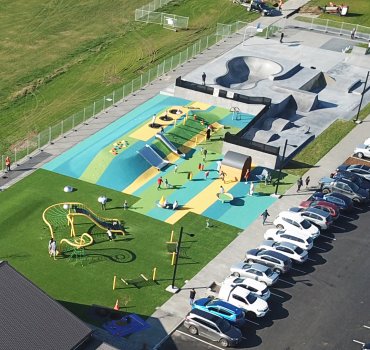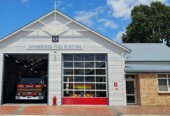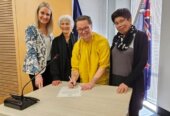

The Tamahere Park project cost ratepayers $2.5m – paid for with a targeted rate for the Tamahere Ward. The latest rates announcement from Waikato District Council will see several targeted rates increases in addition to the general rates increase of 5.19 per cent.
Waikato District Council’s first rates notices of the financial year hit mailboxes across Hautapu, Matangi and Tamahere this week, notifying residents of a general rates increase of 5.19 per cent.
“Individual rate increases will vary depending on your property type, value and location and the services that are available to you,” Waikato District Council Chief Executive Gavin Ion said.
Some of the 30,000 properties in the district will also face an increase in targeted rates for council services in their area (such as water assets, community halls, rubbish and recycling). The exact amounts depends on their location. Ion said the biggest targeted rates increase this year is for those who receive a solid waste collection.
“It’s important to remember that you only pay a targeted rate if you have access to these services,” he said, confirming that the rates were approved at an extraordinary council meeting in late June, and consulted on and approved through the Long Term Plan for 2018 – 2028.
With Waipa District Council announcing an average rates rise of 3.7 per cent in June, and Otorohanga District Council confirming their rates rise of 3.21 per cent, Mr Ion said Waikato District Council’s increase by 5.19 per cent, in addition to increased targeted rates, simply reflected the need to serve more facilities and more people to service in a growing district.
“Being a largely rural district also has its limitations as we have greater distances to cover with a smaller population than the likes of a city. Our population is growing though, so over the next few years there will be more ratepayers to cover this cost.”
The announcement of the rates increase follows a $40,000 mistake by Council contractors last month when the curbing for a roading project on Birchwood Lane in Tamahere was put in at the wrong height, and had to be ripped up and redone. It increased the total project cost from $350,000 to $390,000. The council admitted it would simply have to absorb the cost.
Ion said Waikato district ratepayers can use the Rating Information Database online at www.waikatodistrict.govt.nz/RID to see how much their rates will be for this financial year.
How does it compare?
Waikato District Council’s general rates rise of 5.19 per cent for 2019/2020 towers in comparison over Waipa District Council’s rates increase of a 3.7 per cent, and Otorohanga District Council’s increase of 3.21 per cent.
Waikato District Council’s new rates will contribute to a total rates income of $96.9m, averaging $1285 per person. The general rates expenditure breaks down as follows:
· 39.3 per cent on transport, 20.3 per cent for parks and green spaces
· 14 per cent for lifestyle projects
· 12.5 percent for corporate/council leadership
· 9 per cent for area offices and other properties
· 2.9 per cent for grants and donations
· 0.9 per cent on water management in public places
· 0.7 per cent for refuse in public areas.
Expenditure for Waipa District Council’s 2018 – 19 year, which generated $59.6 million at an average of $1103 per person, included:
· 28.5 per cent on community facilities
· 20.5 per cent on roading
· 17.7 per cent on water
· 11.8 per cent on governance
· 11.7 per cent on wastewater
· 5.5 per cent on storm water
· 3.9 per cent on environmental services
· 0.4 per cent on support services.
Otorohanga’s total rates income for 2018/19 of $12,550,000 averages 1224 per person, and covers:
· 39.4 per cent on roading
· 17.9 per cent on community services
· 15.5 per cent on administration
· 12.4 per cent on water supply
· 6.3 per cent on regulatory services
· 3.9 per cent on waste water
· 2.8 per cent on community and economic development
· 1.4 per cent on storm water
· 0.3 per cent on flood protection.








